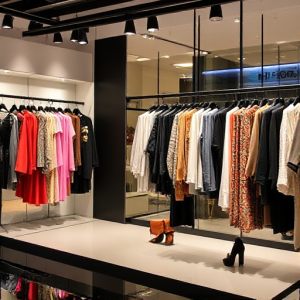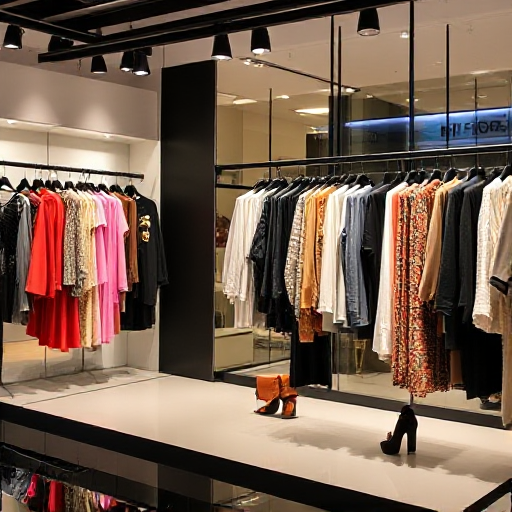
The fashion industry has evolved significantly with the rise of e-commerce. Online fashion stores have become a pivotal part of the fashion retail landscape, offering customers the convenience of shopping from home, browsing through extensive collections, and receiving personalized recommendations. However, the competition is fierce, and standing out in the crowded marketplace requires effective and strategic marketing.
This article will delve into the fundamentals of online fashion store marketing, discussing key strategies, tools, and techniques to help businesses boost their online presence, engage customers, and drive sales.
1. Understanding the Online Fashion Market
The online fashion market is a dynamic and ever-growing space. Consumer behavior has drastically changed, with a large number of shoppers preferring the convenience of online stores. The market is segmented into various categories, such as:
- Apparel (men’s, women’s, and children’s clothing)
- Footwear
- Accessories (jewelry, bags, belts, etc.)
- Luxury fashion
- Sustainable fashion
Each segment has its own unique target audience, pricing strategies, and trends that marketers must consider. Understanding these distinctions will help you tailor your marketing efforts to the right consumers.
2. Key Strategies for Marketing an Online Fashion Store
A. Building a Strong Brand Identity
The fashion market is highly visual, and brand identity is crucial. Your brand should stand out and resonate with your target audience. Here’s how you can build a strong identity:
- Logo and Website Design: A professional logo and an aesthetically pleasing website are essential for making a good first impression. Your website should reflect your brand’s style, values, and target audience.
- Voice and Messaging: Your brand’s tone of voice should be consistent across all platforms. Whether your brand is fun, luxurious, eco-friendly, or trendy, it should come through in your messaging, whether it’s on your website, social media, or email marketing.
- Unique Selling Proposition (USP): Define what makes your fashion store different from others. It could be your products, pricing, sustainability practices, or personalized shopping experiences.
B. Search Engine Optimization (SEO)
SEO plays a crucial role in driving organic traffic to your online store. Fashion consumers often search for products based on keywords, and optimizing your content helps ensure that your store appears at the top of search results. Here’s how you can implement SEO effectively:
- Keyword Research: Use tools like Google Keyword Planner, SEMrush, or Ahrefs to identify popular search terms within the fashion niche. Incorporate these keywords naturally into your product descriptions, blog posts, and category pages.
- On-page SEO: Optimize individual pages by ensuring they have relevant keywords, high-quality images with alt text, and well-structured meta tags (title, description, and headers).
- Content Marketing: Create engaging content such as blogs, how-to guides, and fashion trend articles. These not only help with SEO but also establish your store as an authority in the fashion space.
C. Social Media Marketing
Social media is a powerful tool for marketing fashion products. Platforms like Instagram, Facebook, Pinterest, and TikTok are visual-centric and attract large, engaged audiences who are interested in fashion. Here’s how to leverage social media:
- Instagram: Use Instagram to showcase your products with high-quality photos and videos. Utilize features like Instagram Stories, Reels, and Shopping to engage users. Hashtags related to fashion trends or your niche can also help boost discoverability.
- Influencer Marketing: Collaborating with influencers who align with your brand can help boost credibility and attract new customers. Influencers often have large, dedicated followings, and their recommendations can drive traffic and sales.
- TikTok: Short-form video content is huge on TikTok. Fashion brands can use the platform to post trendy videos, challenges, and styling tips. User-generated content, such as customers showing how they style your products, can also go viral and bring in new customers.
- Pinterest: As a visual discovery engine, Pinterest is ideal for fashion stores. Create boards that reflect seasonal trends, new arrivals, and outfit inspirations, and link these pins to your product pages.
D. Email Marketing
Email marketing is one of the most effective ways to nurture relationships with your customers. Building an email list is essential, and it can be done through newsletters, lead magnets, or offering discounts in exchange for subscriptions. Here’s how to maximize email marketing:
- Personalized Campaigns: Use customer data to personalize your emails. If a customer has browsed certain items, send them follow-up emails with product recommendations, discounts, or notifications about back-in-stock items.
- Abandoned Cart Emails: A significant number of online shoppers abandon their carts before completing a purchase. Sending a series of reminder emails with product images, discounts, or incentives can help recover lost sales.
- Segmentation: Segment your email list based on customer preferences, purchase history, or location. This allows you to send targeted campaigns that resonate with specific groups of customers.
E. Paid Advertising
While organic strategies like SEO and social media marketing are important, paid advertising can provide immediate results. Key channels for fashion store advertising include:
- Google Ads: Google Shopping ads are particularly effective for fashion stores. These ads display product images and prices directly in search results, making it easier for consumers to make purchasing decisions.
- Social Media Ads: Platforms like Facebook, Instagram, and TikTok allow for highly targeted advertising. You can target audiences based on demographics, interests, and behaviors, ensuring that your ads are shown to those most likely to purchase from your store.
- Retargeting: Use retargeting ads to reach users who have visited your website but didn’t make a purchase. These ads remind them of products they viewed and encourage them to return to your store.
3. Influencing Consumer Behavior
A. Product Reviews and Testimonials
Consumers tend to trust peer reviews more than brand messaging. Encourage satisfied customers to leave positive reviews on your website or platforms like Trustpilot and Google. Additionally, featuring testimonials and user-generated content on your site can influence potential buyers.
B. Customer Loyalty Programs
Creating a customer loyalty program helps foster brand loyalty and increase repeat purchases. Offer rewards such as discounts, exclusive offers, or early access to new collections for customers who frequently shop at your store.
C. Free Shipping and Returns
Free shipping is a major deciding factor for many online shoppers. Offering free shipping (with conditions) or easy returns can improve conversion rates and customer satisfaction.
4. Leveraging Data and Analytics
To understand how your marketing strategies are performing, you must use data analytics tools such as Google Analytics, Facebook Insights, and Instagram Insights. These tools will provide you with detailed information about website traffic, user behavior, conversion rates, and more, allowing you to refine your marketing efforts.
By tracking metrics like:
- Customer acquisition cost (CAC)
- Customer lifetime value (CLV)
- Conversion rate
- Average order value (AOV)
You can make data-driven decisions to enhance your marketing strategies and improve your ROI.
Marketing an online fashion store requires a blend of creativity, strategy, and data analysis. Building a strong brand identity, optimizing your website for SEO, utilizing social media platforms, and engaging in personalized email marketing are key components to success. By constantly adapting to trends, utilizing analytics, and understanding your target audience, your online fashion store can thrive in an increasingly competitive digital marketplace.
Remember that fashion marketing is not a one-time task but an ongoing process. Stay flexible and ready to adjust your strategies based on performance and customer feedback. With the right approach, your online fashion store can stand out, attract a loyal customer base, and drive long-term success.
